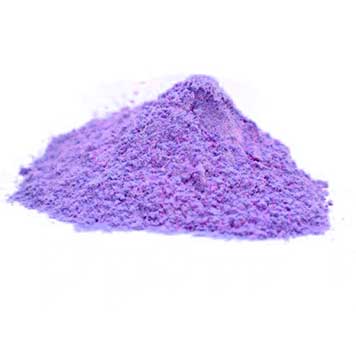
Understanding the Role of Sodium Acid Pyrophosphate in Food and Industry Applications
Understanding Sodium Acid Pyrophosphate (SAPP)
Sodium Acid Pyrophosphate (SAPP) is a white crystalline powder that has gained popularity in various industries due to its unique chemical properties and functionality. It is primarily used as a food additive, but its applications extend into the fields of pharmaceuticals, cosmetics, and even industrial practices.
Chemical Structure and Properties
Chemically, SAPP is a sodium salt of pyrophosphoric acid with the formula Na2H2P2O7. It is classified as a sequestrant, an acidulant, and a leavening agent, which means it can bind metal ions, alter pH levels, and create gas that causes dough to rise respectively. SAPP is highly soluble in water, which makes it an effective ingredient in various formulations.
Applications in Food Industry
In the food industry, SAPP is primarily used as a leavening agent in baked goods. Its ability to produce carbon dioxide gas when combined with an acid makes it essential for creating light and airy textures in products such as cakes, muffins, and pancakes. It works synergistically with baking soda to enhance the leavening effect, enabling quicker baking processes and improved overall quality of the final product.
Additionally, SAPP is utilized in the preparation of processed cheese products, where it acts as a stabilizer to improve texture and prevent separation during storage. It is also employed in the manufacturing of instant mashed potatoes and other dehydrated foods, where it assists in moisture retention and texture enhancement.
Benefits and Safety
sapp sodium acid pyrophosphate

One of the primary benefits of SAPP is its compatibility with a wide range of food matrices. It is generally recognized as safe (GRAS) by food safety authorities, making it a reliable ingredient in food product formulations. SAPP is low in sodium compared to other sodium-containing ingredients, which makes it a preferable choice for health-conscious consumers looking to reduce their sodium intake while still enjoying flavorful foods.
Moreover, since it acts as a pH regulator, it can contribute to the overall stability of food products, enhancing shelf life and preserving flavor and color.
Use in Pharmaceuticals and Cosmetics
Aside from the food sector, SAPP finds its place in the pharmaceutical industry, where it is used as an excipient in tablets, acting as a disintegrant that aids in the breakdown and absorption of the active ingredients. In cosmetics, it serves as a pH adjuster and chelating agent, helping to stabilize products that contain metal ions and ensuring longer shelf lives for formulations.
Industrial Applications
SAPP is also prevalent in various industrial applications. It is used in ceramics to improve bonding and plasticity during the manufacturing process. In addition, SAPP is included in cleaning products and detergents as a builder, which enhances the cleaning efficiency by softening water and preventing the precipitation of hardness ions.
Conclusion
Sodium Acid Pyrophosphate is a versatile compound with an array of applications across multiple industries. Its efficacy as a leavening agent in the food industry, combined with its roles in pharmaceuticals, cosmetics, and industrial practices, showcases its importance. Given its safety profile and functional benefits, SAPP is likely to continue playing a significant role in product formulations. As consumer preferences evolve, the demand for such ingredients that enhance product quality while meeting safety standards will likely increase, solidifying the place of SAPP in modern production processes.
-
The Safety Challenges of Ammonium Nitrate FertilizerNewsJun.26,2025
-
The Critical Role of Mining ChemicalsNewsJun.26,2025
-
Shelf Life of Glacial Acetic Acid Food GradeNewsJun.26,2025
-
Enhancing PVC Longevity with 1,2,3-Benzotriazole InnovationsNewsJun.26,2025
-
China’s Dominance in Food Additive ProductionNewsJun.26,2025
-
Can Aluminum Hydroxide Replace More Toxic Alternatives?NewsJun.26,2025
-
PE and PP Plastics with Benzotriazole AdditivesNewsJun.12,2025
Hebei Tenger Chemical Technology Co., Ltd. focuses on the chemical industry and is committed to the export service of chemical raw materials.
-

view more DiethanolisopropanolamineIn the ever-growing field of chemical solutions, diethanolisopropanolamine (DEIPA) stands out as a versatile and important compound. Due to its unique chemical structure and properties, DEIPA is of interest to various industries including construction, personal care, and agriculture. -

view more TriisopropanolamineTriisopropanolamine (TIPA) alkanol amine substance, is a kind of alcohol amine compound with amino and alcohol hydroxyl, and because of its molecules contains both amino and hydroxyl. -

view more Tetramethyl Thiuram DisulfideTetramethyl thiuram disulfide, also known as TMTD, is a white to light-yellow powder with a distinct sulfur-like odor. It is soluble in organic solvents such as benzene, acetone, and ethyl acetate, making it highly versatile for use in different formulations. TMTD is known for its excellent vulcanization acceleration properties, which makes it a key ingredient in the production of rubber products. Additionally, it acts as an effective fungicide and bactericide, making it valuable in agricultural applications. Its high purity and stability ensure consistent performance, making it a preferred choice for manufacturers across various industries.











